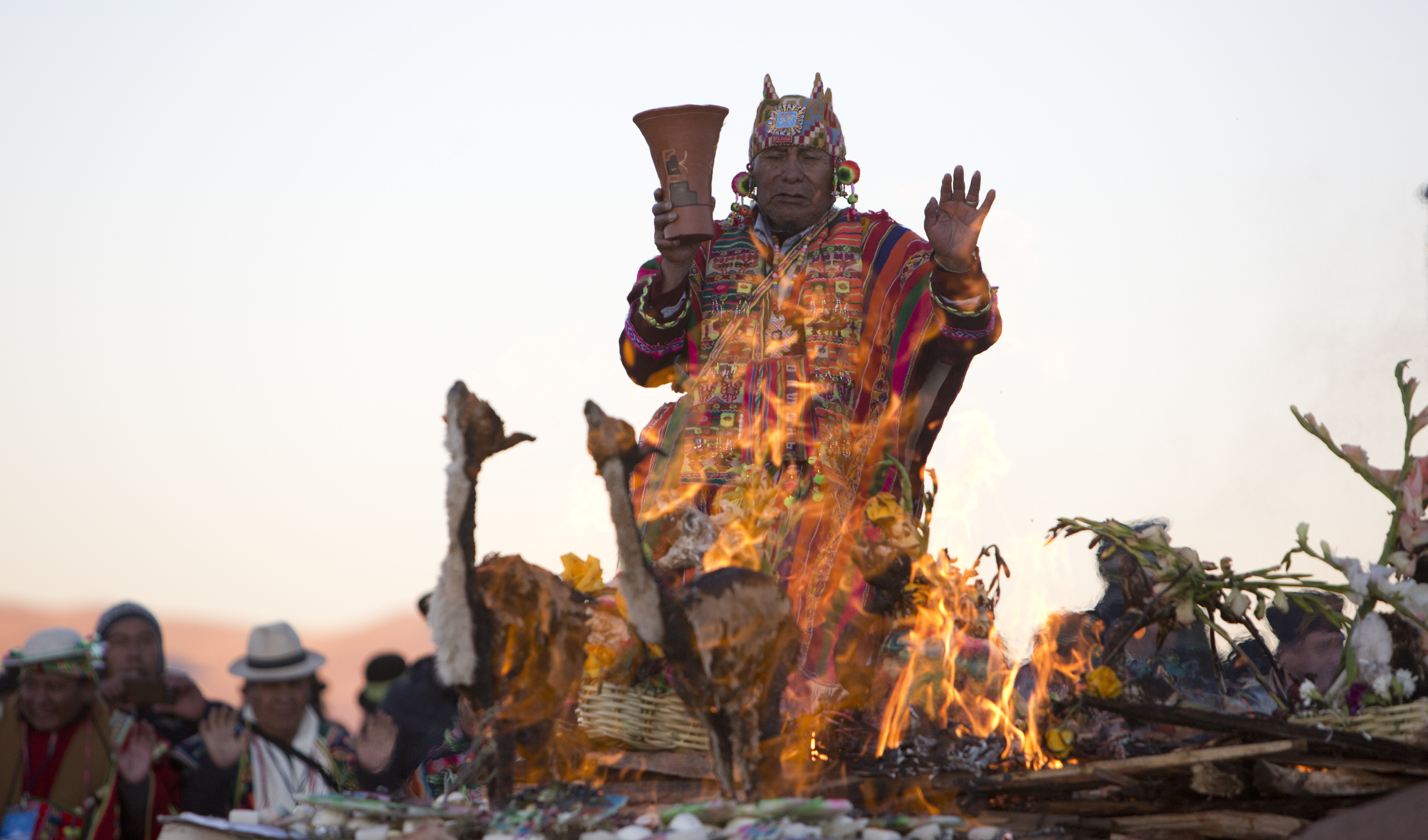
By FRANKLIN BRICENO
Associated Press
CUZCO, Peru (AP) — Long before electricity, ancient Incans relied on one sole energy source to power their daily lives: the sun. So each year when winter approached and the sun’s daily jaunt across the sky became increasingly short, Incan worshippers offered a festival of music, dance and sacrifices in hopes of being granted a plentiful harvest. The festival was known as Inti Raymi, and today it is still celebrated throughout the Andes, not to mention more than a few yoga studios.
On Sunday, indigenous communities along the path of the once powerful Incan Empire gathered for the Southern Hemisphere’s winter solstice to honor the ancient sun god Inti.
In the small Ecuadorean town of Cotacachi rowdy revelers danced in traditional costumes in a colonial plaza. In the former Incan capital of Cuzco, Peru, a few thousand mainly foreign tourists paid upward of $160 for a grandstand seat to watch hundreds of actors re-enact a llama sacrifice at an ancient citadel. Tens of thousands more, mostly poor Peruvian, spectators congregated on three hillside vantage points to watch from afar with red tape and police dogs keeping them in check.
“This is too beautiful,” said Jeane Heap, a retiree from England who was making her first trio to Peru. “The Incans were incredibly intelligent.” According to historians, the Incas believed each year’s winter solstice marked the rebirth of a sun god who watched them from above and ruled over whether crops withered or grew in abundance. Incas from what is now Ecuador, Bolivia, Chile and Argentina traveled to Peru and dressed in gold and silver jewelry for the festivity featuring theater, dance and llama sacrifices.
Spanish conquerors and Roman Catholic priests prohibited the celebration in the 16th century but worshippers kept the ritual alive with smaller underground festivities. A group of artists officially reinitiated the Inti Raymi jubilee in Peru in 1944. On Sunday in Cuzco, which is a UNESCO world heritage site, the annual fete began in a temple where Incas once worshipped the sun and continued at a central plaza before reaching the fort, where 700 actors recreated the ancient ritual.
















